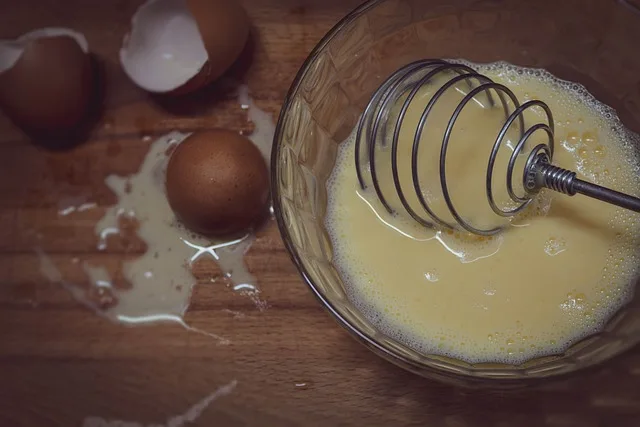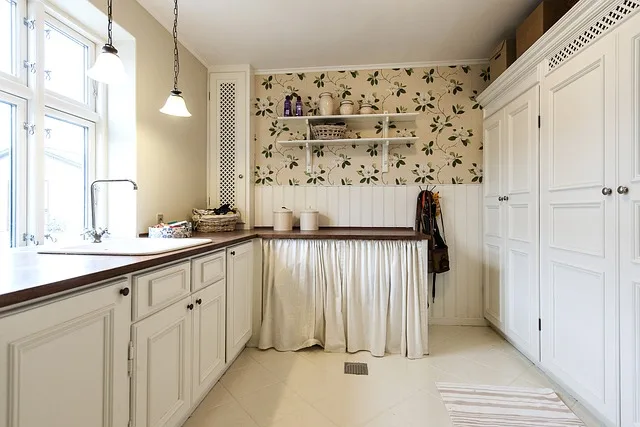First off, you’ve got your wood. Whether it’s sturdy oak, sleek maple, or budget-friendly plywood, the choice of material sets the stage for everything that follows. Think of it as choosing the canvas for a masterpiece. Once the wood is selected, it’s time to cut it down to size. This is where precision comes into play. Just like a tailor measuring fabric for a suit, cabinet makers measure and cut each piece to ensure a perfect fit.
Next, the pieces are assembled. This is where the magic really happens! Using techniques like dovetail joints or pocket screws, the cabinet starts to take shape. It’s like putting together a puzzle, where each piece clicks into place, creating a sturdy structure that can withstand the test of time.
After assembly, it’s all about the finish. Staining, painting, or sealing the wood not only enhances its beauty but also protects it from spills and splatters—because let’s face it, kitchens can get messy! Imagine giving your cabinets a fresh coat of paint, like dressing them up for a night out.
Finally, the cabinets are installed, and voilà! You’ve got a stunning addition to your kitchen that’s both functional and stylish. So, the next time you open your cabinet doors, remember the craftsmanship and care that went into building them. It’s a journey from raw wood to a beautiful centerpiece in your home!
From Blueprint to Beauty: The Art and Science of Kitchen Cabinet Construction
First off, let’s talk about the blueprint. This is where the magic begins. Designers sketch out every detail, considering not just aesthetics but also functionality. It’s like planning a symphony; every note must harmonize. The layout needs to flow seamlessly, ensuring you can whip up a gourmet meal without tripping over your own feet. Ever tried cooking in a cramped space? It’s like trying to dance in a phone booth!
Now, onto the materials. This is where the science kicks in. High-quality wood, durable finishes, and smart hardware choices are crucial. Think of it as building a sturdy ship; you wouldn’t want it to sink halfway through your culinary voyage! The right materials not only enhance the beauty but also ensure longevity. Who wants to replace cabinets every few years? Not you!
Then comes the construction phase, where skilled craftsmen bring the blueprint to life. It’s a meticulous process, almost like sculpting a statue from a block of marble. Each cut, each joint, is carefully executed to create a seamless look. And let’s not forget about the finishing touches—paint, stain, or glaze—that add personality and flair. It’s like adding the perfect accessory to an outfit; it can make all the difference!
So, the next time you admire those stunning kitchen cabinets, remember the incredible journey they took from mere ideas on paper to the beautiful, functional pieces that elevate your space. Isn’t it amazing how a little creativity and precision can transform a room?
Behind Closed Doors: A Step-by-Step Guide to Building Kitchen Cabinets
First things first, gather your materials. You’ll need plywood, screws, wood glue, and a good quality finish. Think of this as your treasure map; without the right tools, you might end up lost in the woods! Once you have everything, sketch out your cabinet design. This is where the magic begins. Visualizing your space helps you see how the cabinets will fit and flow with your kitchen.
Next, it’s time to cut your wood. Measure twice, cut once—this old adage is your best friend here. Picture yourself as a sculptor, chiseling away at a block of marble. Each cut brings you closer to your masterpiece. After cutting, assemble the pieces using wood glue and screws. It’s like building a sturdy fortress; you want it to stand the test of time.
Now, let’s talk about finishing touches. Sanding your cabinets is crucial; it’s like giving them a spa day. A smooth surface not only looks great but also helps the paint or stain adhere better. Speaking of which, choose a finish that complements your kitchen’s vibe. Whether it’s a sleek modern look or a rustic charm, the right finish can make all the difference.
Crafting Culinary Spaces: The Secrets of Kitchen Cabinet Design and Assembly
First off, let’s talk about layout. Think of your kitchen as a stage where every cabinet plays a role. The classic work triangle—sink, stove, and refrigerator—should be your guiding star. Positioning your cabinets to enhance this flow can transform your cooking experience. It’s like choreographing a dance; when everything is in sync, the performance is flawless.
Now, let’s dive into materials. Choosing the right wood or laminate can make a world of difference. Solid wood exudes warmth and durability, while sleek laminates can give a modern twist. Picture your cabinets as the wardrobe of your kitchen; they should reflect your style while standing the test of time. And don’t forget about finishes! A glossy finish can add a touch of elegance, while a matte look can create a cozy vibe.

Assembly is where the magic happens. It’s not just about putting pieces together; it’s about creating a cohesive unit. Think of it like building a puzzle—each piece must fit perfectly to reveal the bigger picture. Using quality hardware ensures that your cabinets not only look good but also function smoothly. Who wants a cabinet door that squeaks or won’t close properly?
Lastly, personalization is key. Adding unique touches, like custom handles or open shelving, can elevate your kitchen from ordinary to extraordinary. It’s like adding a signature spice to your favorite dish—suddenly, it’s a masterpiece! So, as you embark on your kitchen cabinet journey, remember that thoughtful design and careful assembly can turn your culinary space into a haven of creativity and joy.
The Anatomy of Kitchen Cabinets: Materials, Techniques, and Trends
First off, let’s talk materials. Kitchen cabinets can be crafted from a variety of substances, each with its own personality. Solid wood cabinets exude warmth and charm, while plywood offers durability without breaking the bank. Then there’s MDF, a favorite for those sleek, modern designs. It’s like the chameleon of the cabinet world—easy to paint and perfect for achieving that flawless finish.
Now, onto techniques. The craftsmanship behind kitchen cabinets is nothing short of an art form. From traditional joinery methods that have stood the test of time to modern techniques like CNC machining, the precision involved is impressive. Think of it as a dance between technology and tradition, where each piece is meticulously crafted to fit together like a well-rehearsed performance.
And let’s not forget about trends! The world of kitchen cabinets is always evolving. Right now, we’re seeing a rise in open shelving, which gives kitchens a breezy, spacious feel. Matte finishes are also making waves, offering a sophisticated alternative to glossy surfaces. It’s like swapping out your favorite bright shirt for a chic, understated look.

So, whether you’re planning a kitchen remodel or just daydreaming about your dream space, understanding the anatomy of kitchen cabinets can help you make informed choices that reflect your style and needs.
DIY or Professional? Navigating the Kitchen Cabinet Building Process

Let’s break it down. DIY can be incredibly rewarding. Imagine the satisfaction of crafting something with your own hands, like a chef whipping up a gourmet meal. You get to choose every detail, from the wood type to the finish, and you can often save a pretty penny. Plus, there’s something special about saying, “I built that!” But hold on—before you grab your hammer and nails, consider the learning curve. If you’re not handy, you might find yourself in a world of frustration, not to mention the potential for costly mistakes.
On the flip side, hiring a professional can feel like a breath of fresh air. You get expertise, efficiency, and a polished finish that’s hard to replicate. Think of it like ordering takeout from your favorite restaurant—sure, you could cook at home, but sometimes it’s just nice to let someone else handle the heavy lifting. Plus, professionals often have access to better materials and tools, ensuring your cabinets are not just beautiful but also durable.
So, what’s the right choice for you? It really depends on your comfort level, budget, and how much time you’re willing to invest. Whether you’re a DIY enthusiast or prefer to leave it to the experts, the journey to your dream kitchen cabinets can be an exciting adventure.
Frequently Asked Questions
How Long Does It Take to Build Kitchen Cabinets?
The time required to build kitchen cabinets varies based on factors such as design complexity, materials used, and the builder’s experience. Generally, it can take anywhere from a few weeks to several months. Custom cabinets typically require more time due to detailed craftsmanship, while pre-fabricated options may be quicker to install.
What Are the Steps in the Kitchen Cabinet Construction Process?
The kitchen cabinet construction process involves several key steps: first, design and planning, where measurements and styles are determined; second, material selection, choosing the right wood or laminate; third, cutting and shaping the materials to size; fourth, assembly of the cabinet components; fifth, finishing, which includes sanding and applying paint or stain; and finally, installation, where the cabinets are securely mounted in the kitchen space.
What Materials Are Used to Build Kitchen Cabinets?
Kitchen cabinets are typically constructed from a variety of materials, including solid wood, plywood, particleboard, and medium-density fiberboard (MDF). Solid wood offers durability and a classic look, while plywood provides strength and resistance to warping. Particleboard and MDF are cost-effective options that are often used for their smooth surfaces and ease of finishing. The choice of material affects the cabinet’s appearance, durability, and cost.
What Tools Do I Need to Build Kitchen Cabinets?
To build kitchen cabinets, you will need essential tools such as a table saw for cutting wood, a miter saw for precise angles, a drill for making holes and driving screws, a level to ensure even surfaces, clamps for holding pieces together, and a sander for smooth finishes. Additionally, having a measuring tape and square will help ensure accuracy in your measurements.
Can I Customize My Kitchen Cabinets?
Yes, kitchen cabinets can be customized to fit your specific needs and preferences. Options include selecting materials, colors, finishes, sizes, and configurations to create a unique look and functionality that suits your kitchen layout.